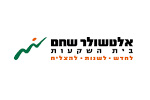Companies who implement sales incentive plans usually do so in an attempt to improve the performance of their sales representatives. However, internally focused sales incentive compensation plans can cause the sales reps to work against the customers’ interests and harm the customer trust in the long run. These harmful incentive plans, and the behavior they encourage, can be changed.
Internally focused sales incentive plans, which focus on the amount of sales a representative has made rather than the quality of service he provided his customer with, often lead the sales rep to overlook the customer’s purchase objective. This type of incentive plans may end up rewarding the representative for selling additional services which add no value to the customer, just for the sake of selling.
One of the common wrong doings caused by internally focused sales incentive plans is when the representative tries to add a new product into the deal (this usually happens following the launch of a new product). The new product might be something the customer doesn’t necessarily need or want, but was added into the deal by the sales representative to increase its price. Bundling an un-necessary product into the deal will not increase the satisfaction of the costumer, but it will reward the sales rep.
Another negative consequence of internally focused sales incentive compensation plan is that they often motivate the sales team members to pressure the customer into filling in a favorable customer satisfaction survey. The pestering of customers for a favorable survey is of course an utter waste of company’s resources which can potentially damage the overall customer experience and may drive customers away.
Two key factors may help companies resolve the problems posed by a faulty incentive plans: understanding what the customer values and making sure the sales rep spend their time wisely. The first can be achieved through customer survey or by mystery shopping. Either of these will allow the company to evaluate what the customer values and how well his interests are met by the sales reps. The best way to monitor the reps’ time spending is by DILO (Day in the life) ride along. This will allow the manager to oversee the interactions between the sales rep and customer and make sure the reps’ time is not wasted.
In conclusion, many of the incentive plans used today are internally focused and can damage the overall customer experience and eventually result in fleeing customers. In order to deal with these problems, companies must make sure they link the customer’s goals to the sales rep rewards.


























































